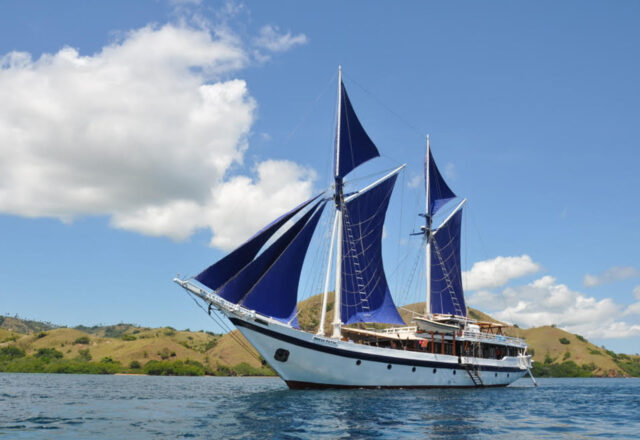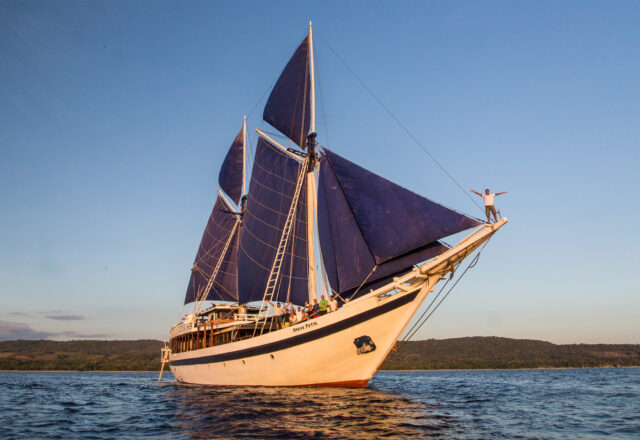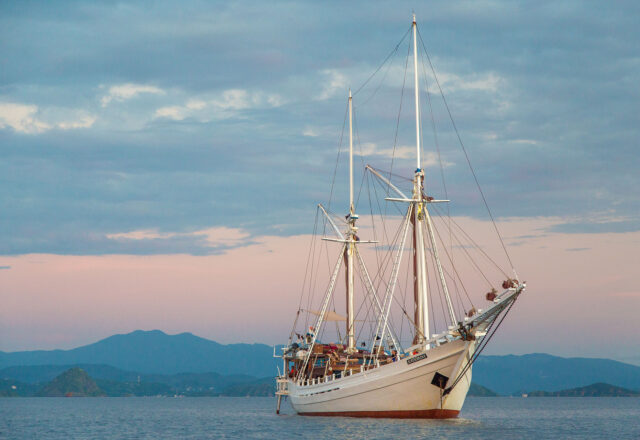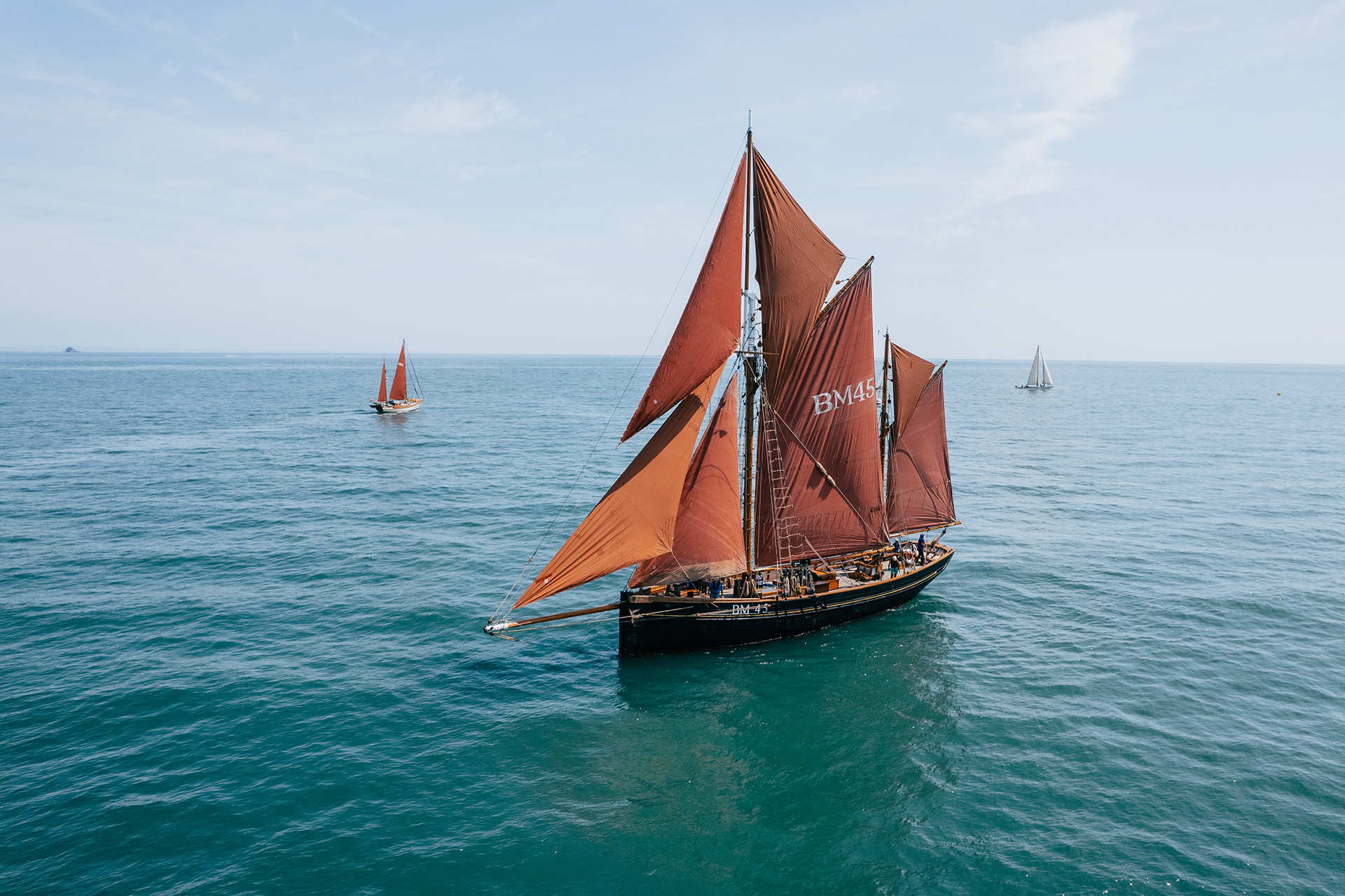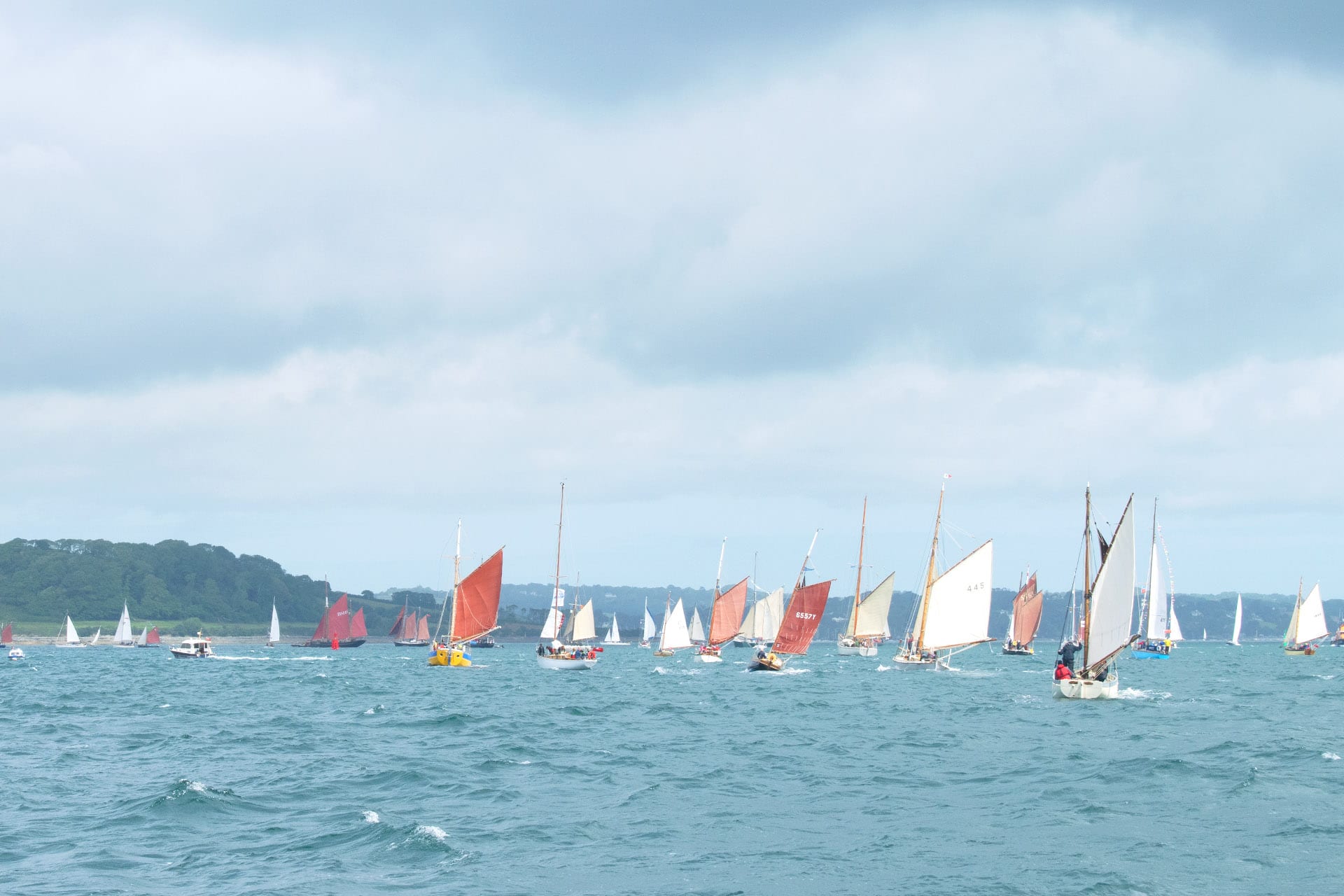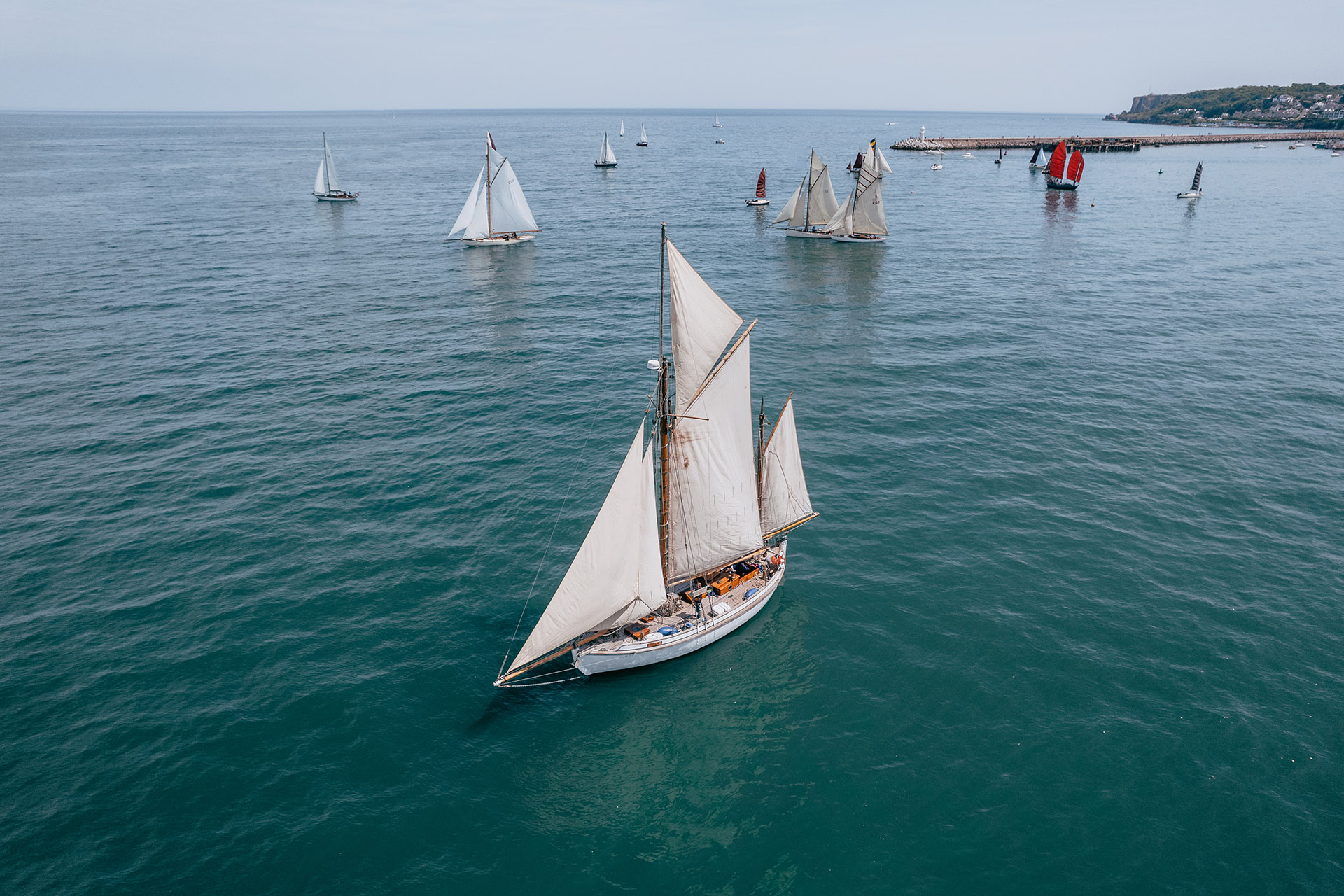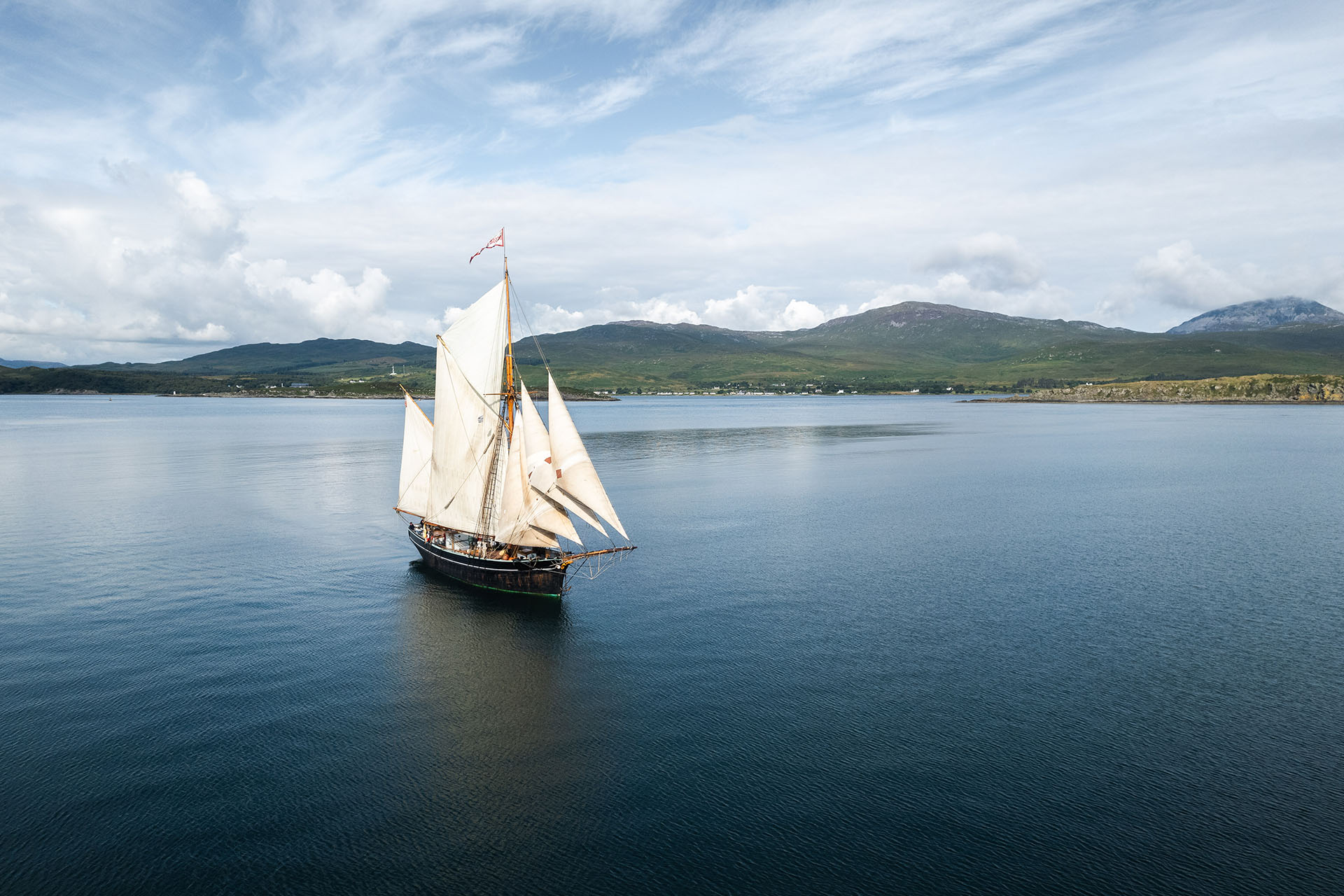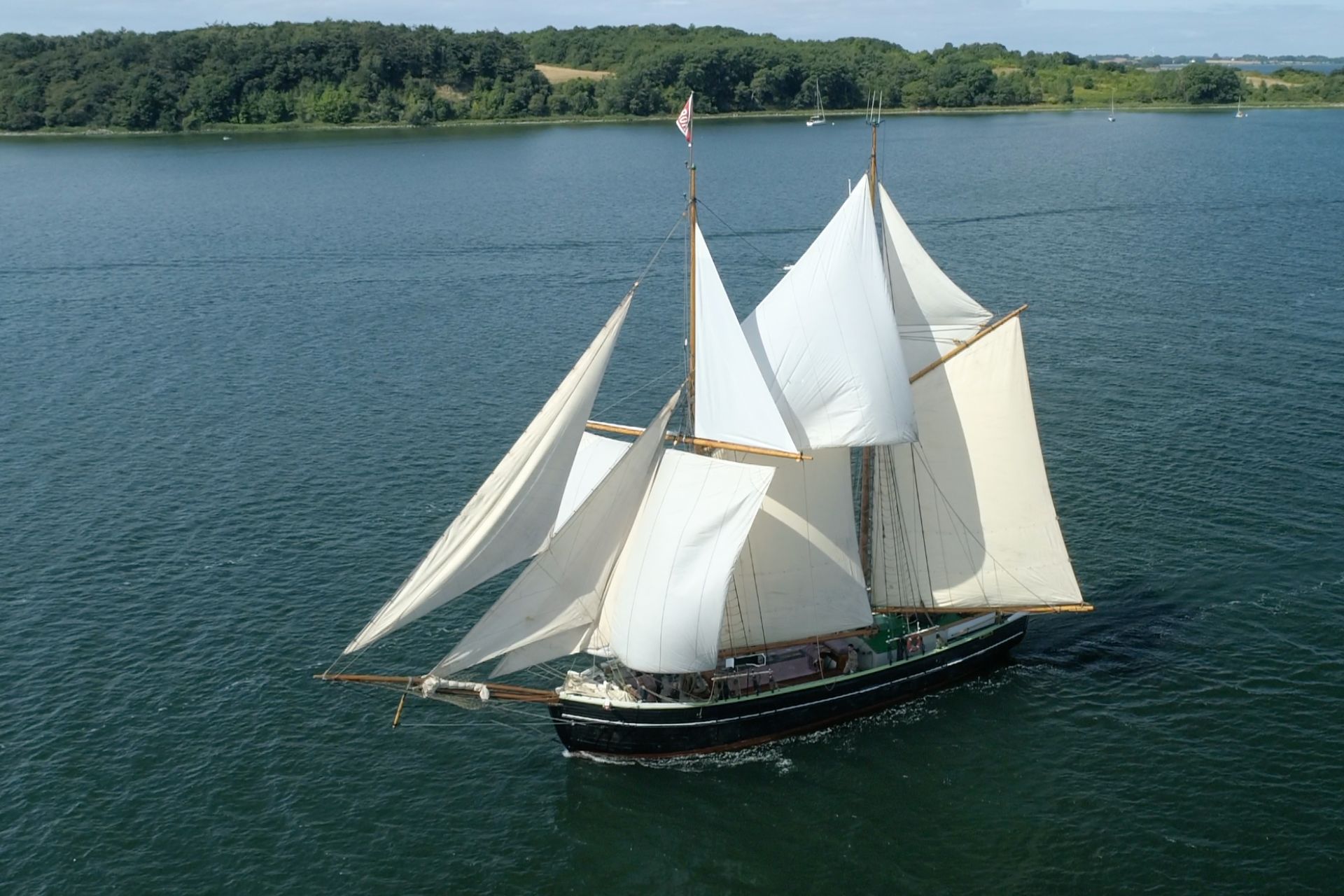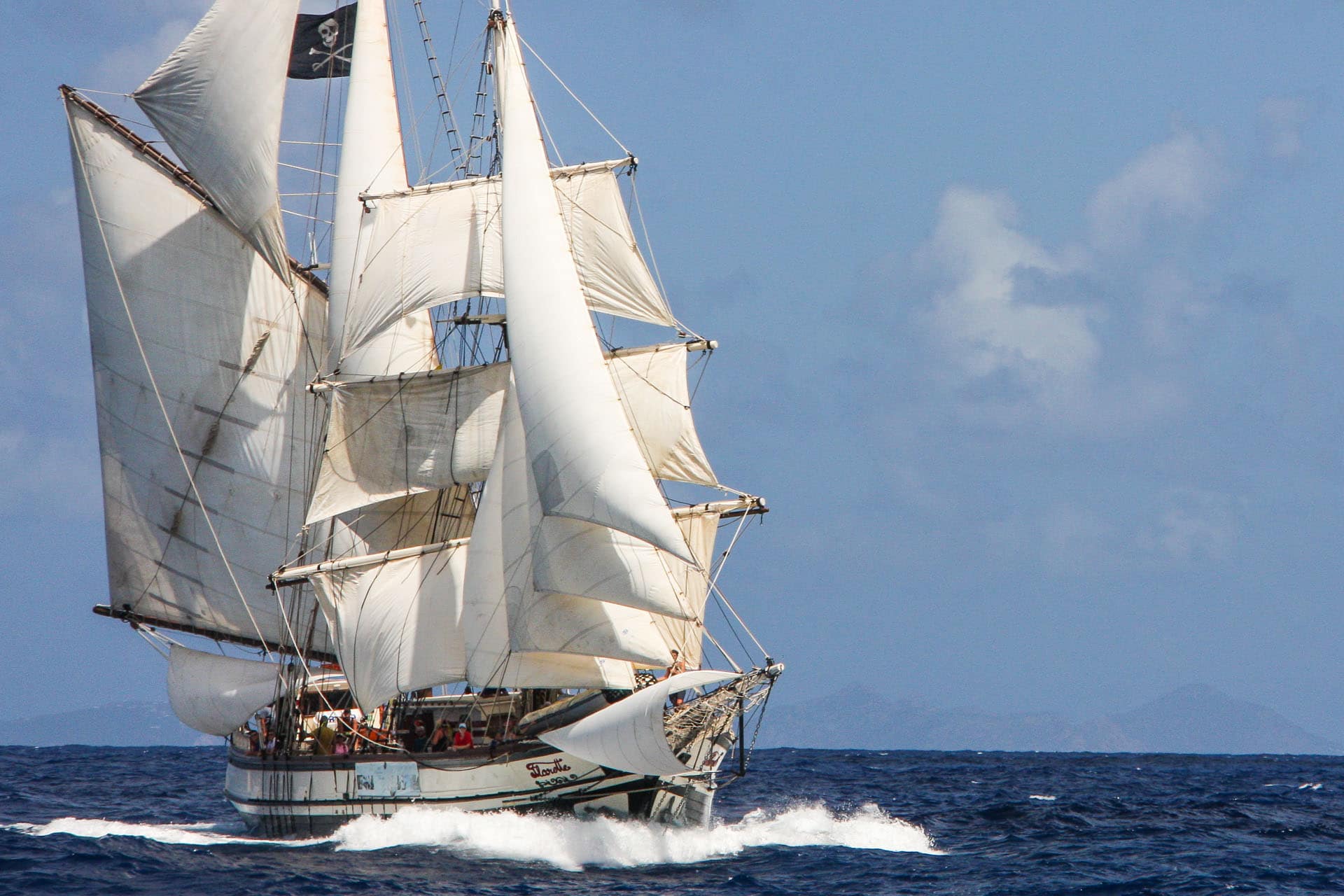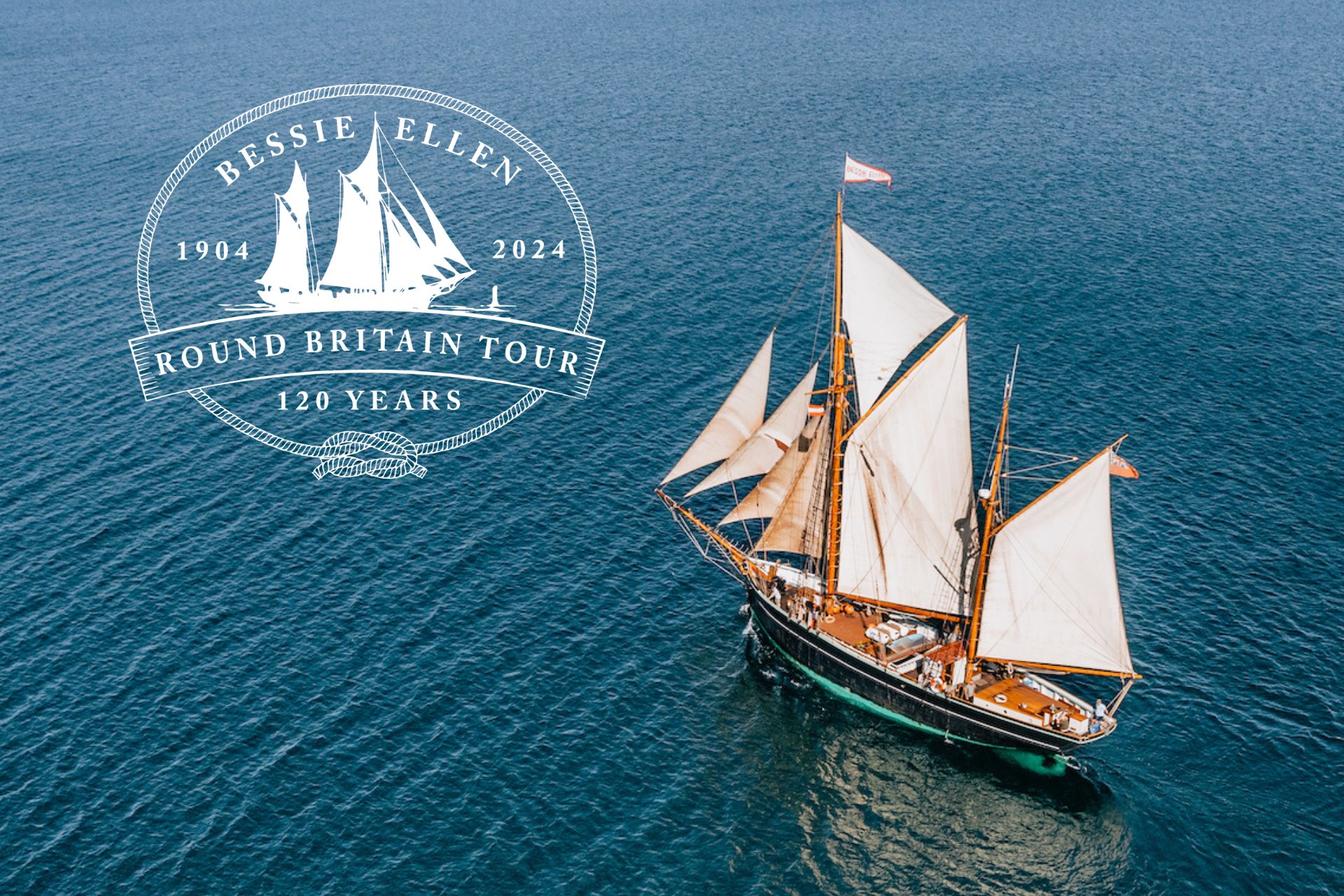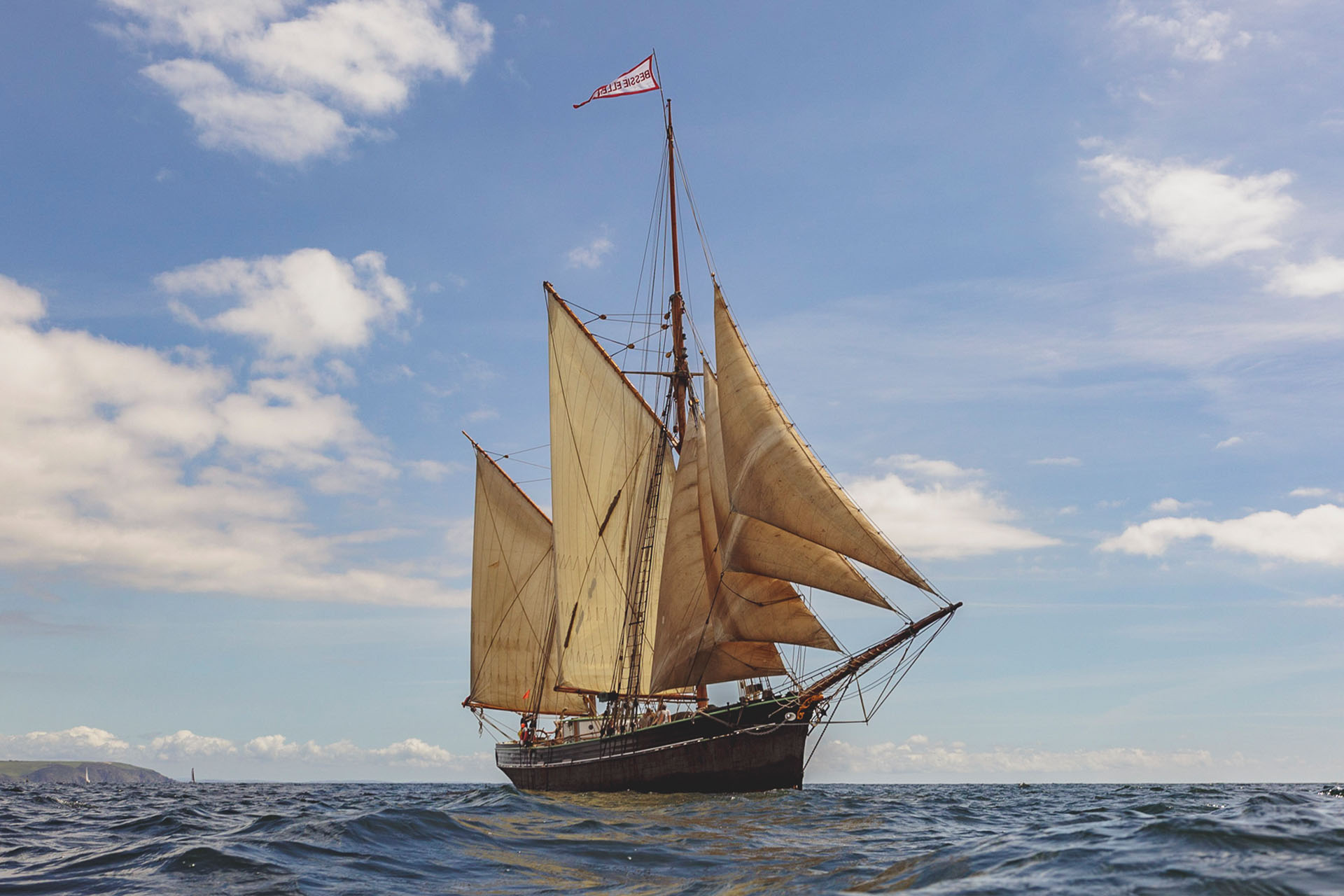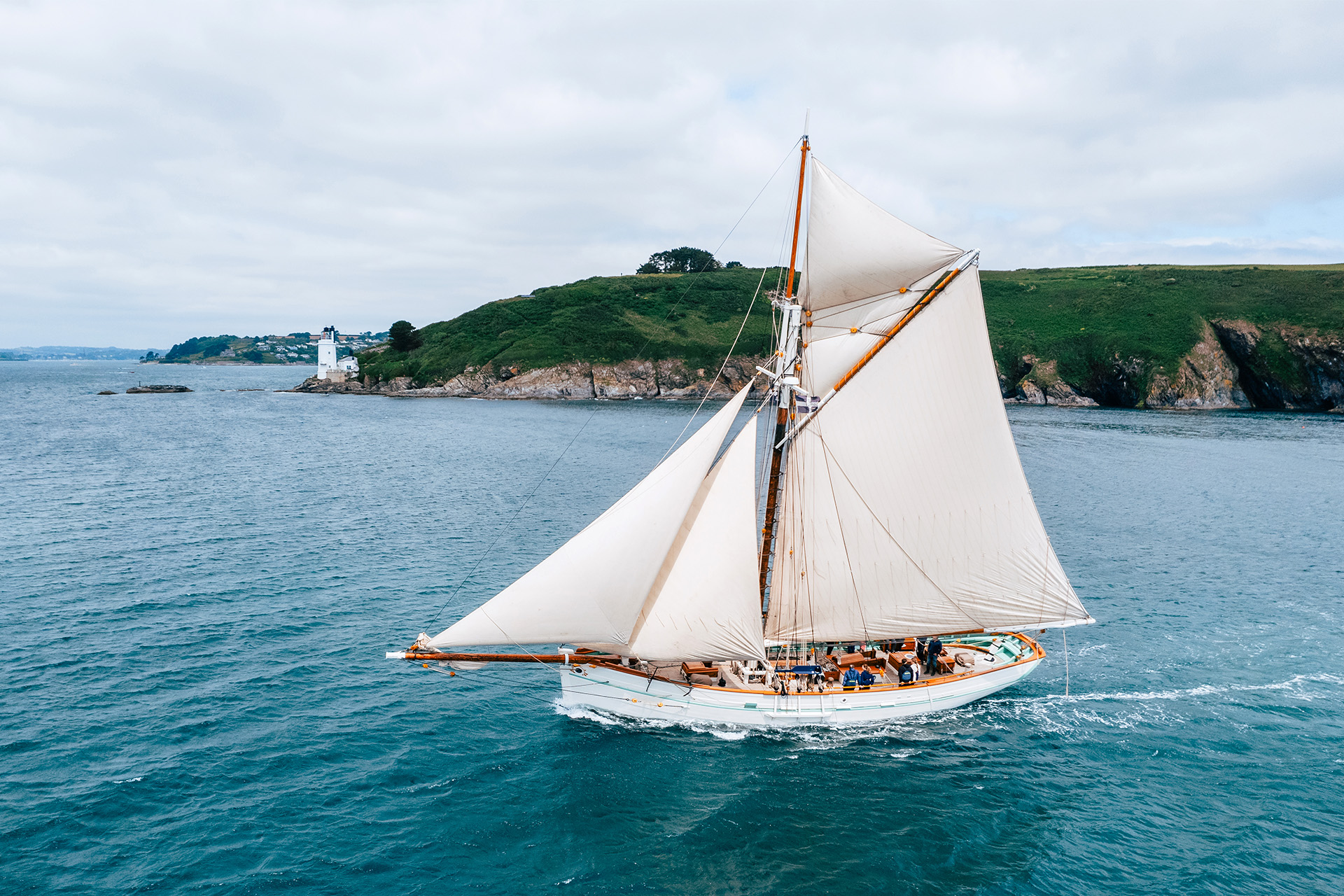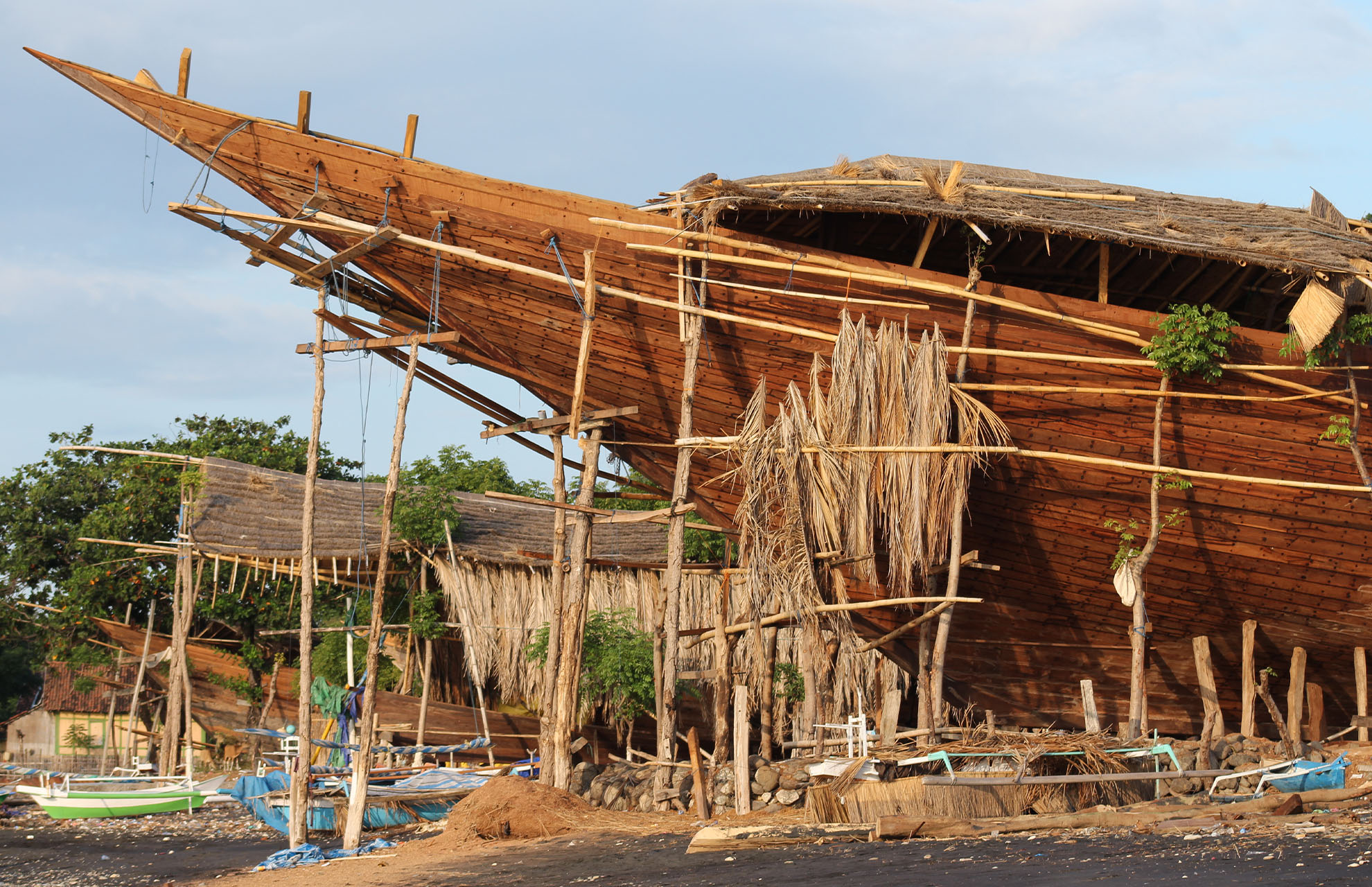
Elegantly curvaceous with a reclining aft deck, Indonesian Pinisi boats almost feel like they were made for sunny sailing holidays in Indonesia. However, they were originally designed as cargo vessels, and their history forms an interesting chapter in the ancient Ausroneasian tradition of maritime exploration. Here, we uncover the fascinating history of pinisi boats, as well as highlighting the role of modern pinisi boats in Indonesia.
What is a Pinisi boat?
The word ‘pinisi’ describes a traditional gaff-ketch sailing rig used on ships originating from Sulawesi, the fourth-largest Indonesian island. It’s important to note here that ‘pinisi’ refers only technically to the rigging. The boat to which these rigs are attached are usually palari boats. Palari boats have distinctively shaped hulls and are built traditionally from ironwood, a common timber grown on Sulawesi. For clarity, we’ll refer to the entire structure including the hull as ‘pinisi boats’. This is conventional, despite the literal meaning being only to do with the mast and sails.
Pinisi boats are easily recognisable by billowing sails spread over two masts and a bowsprit, plus a large, towering hull with accommodation at the stern. Pinsi rigged ships were – and still are – used for both fishing and transporting important cargo such as rice, sugar and spices. At between 50-70 feet long, their size means they are large enough to carry plenty of goods, but nimble enough to navigate through narrow ports and unpredictable waters.
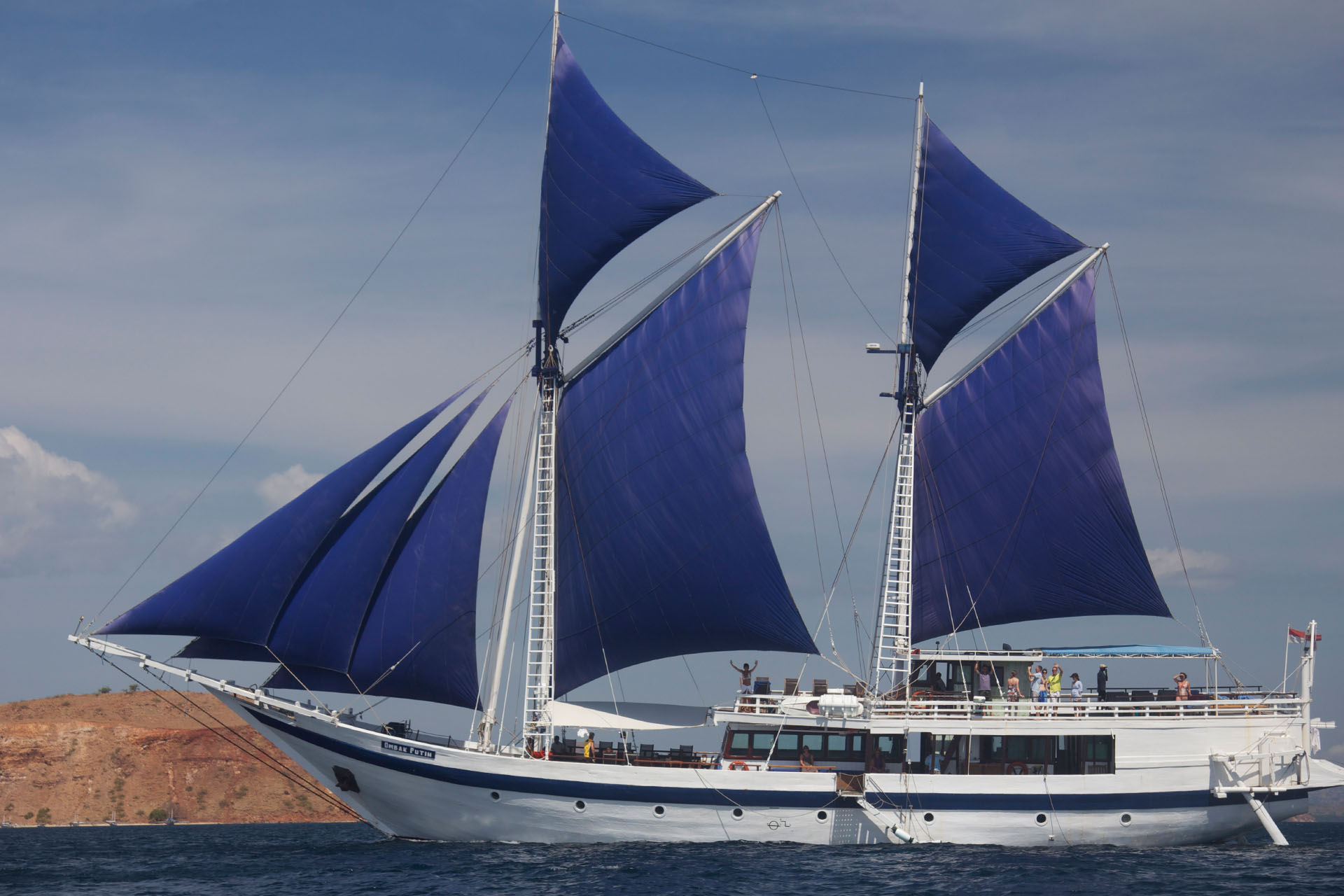


____________________________________________
The history of Indonesian boatbuilding
The pinsi boat has relatively recent origins in contrast to Indonesian boat-building, a pioneering legacy stretching back millenia. Despite being built and launched by hand, the sail design is over a hundred years old. The first pinisi-rigged boat was built in 1906, with the earliest recorded use of the term ‘pinisi’ appearing in 1917. Sulawesian sailors took influence from a European rigging style – specifically Dutch schooners. But rather than using a halyard to hoist a movable spar as in the western tradition, the sails are pulled out from gaffs which are fixed at points along the mast. Soon the palari hull design was swapped in, as it was faster, longer and more suited to the ketch rig.
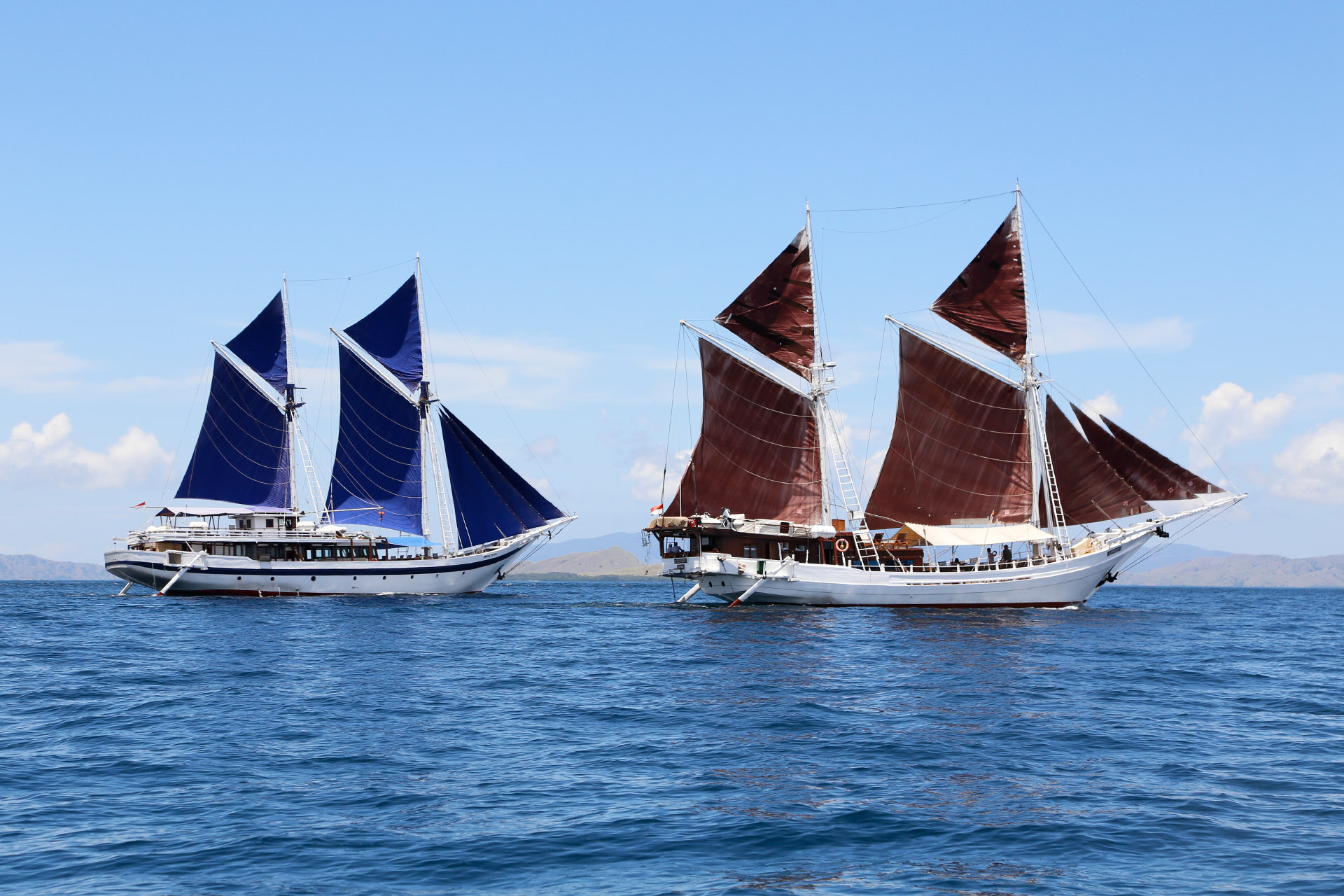
The pinsi design was commercially successful – in the 1970s, the fleet was the largest of its kind in the world, with over 1000 ships in commission. Although that number has declined with the advent of modern shipping, there is still a thriving community in Sulawesi designing and building pinisi boats. In 2011, the largest pinisi boat ever to be built was launched in south Sulawesi – it’s over 50 metres long and can carry 500 tonnes of cargo. And like the majority of pinisi built after 1980, it’s also fitted with an engine, the only real change in design for the last century. Today, most pinisi have both sails and a motor, meaning the boats can deliver cargo upwind should the need arise.
The standard or blueprint for the pinisi boat has only recently been codified. Before the 1990s, boat builders in Sulawesi used oral tradition to pass down knowledge of how to construct these ships. Originally they were built using only the local ironwood, without any form of metal used in the construction whatsoever. This traditional practice has been recognised by UNESCO, who state that “the construction and deployment of such vessels stand in the millennia-long tradition of Austronesian boatbuilding and navigation”, and therefore deserve a place on the Representative List of the Intangible Cultural Heritage of Humanity.
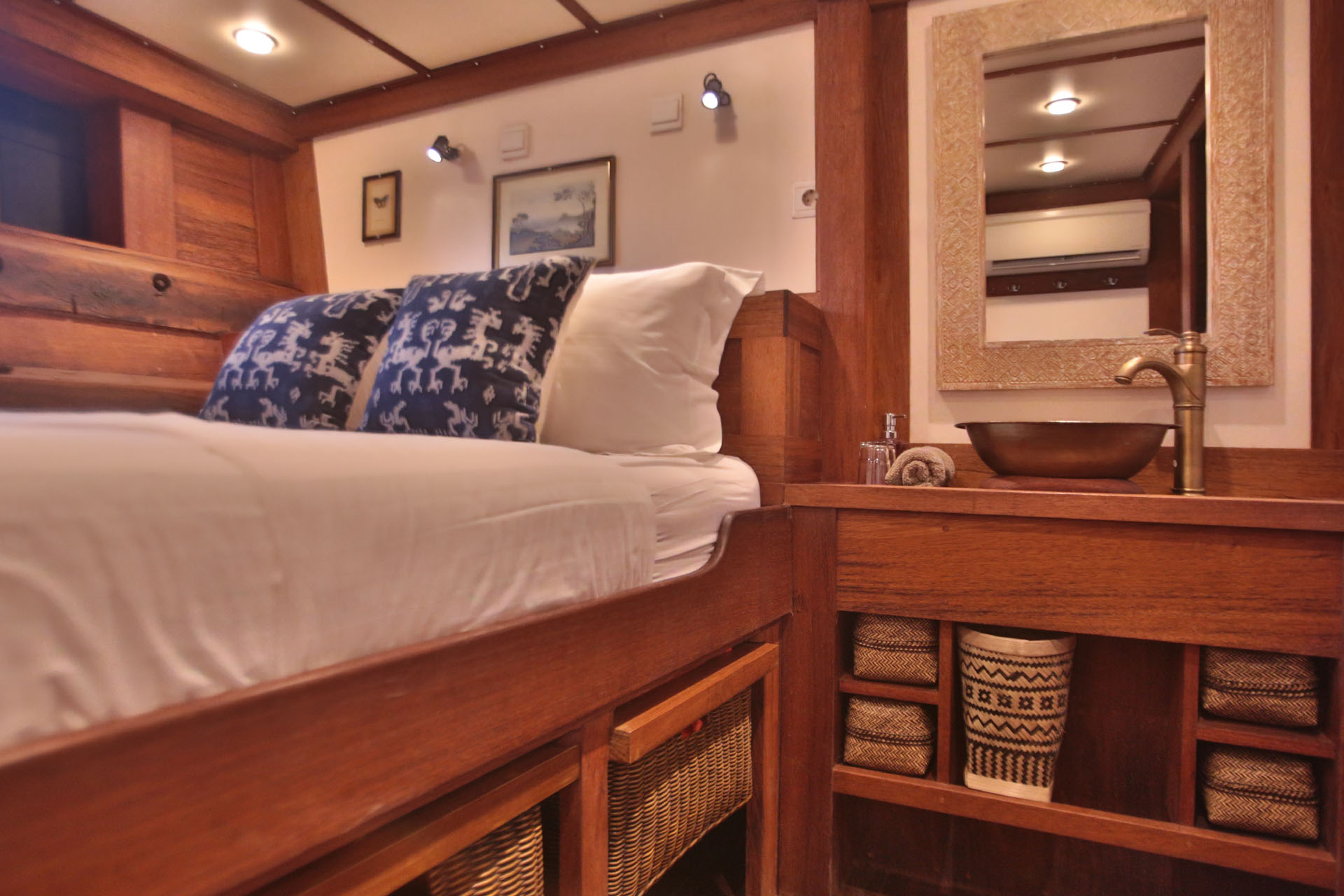

The continuation of the Sulwesian boatbuilding tradition is partially because pinisi boats are now being used in another sector alongside trade and fishing: maritime tourism. Their large holding capacity, powerful rig and relatively shallow drafts means that pinisi boats are easily converted into luxury sailing vessels. Pinisi boats hold a unique ability to explore every nook and cranny of these 17,000 islands, visiting destinations far from the tourist hotspots.


